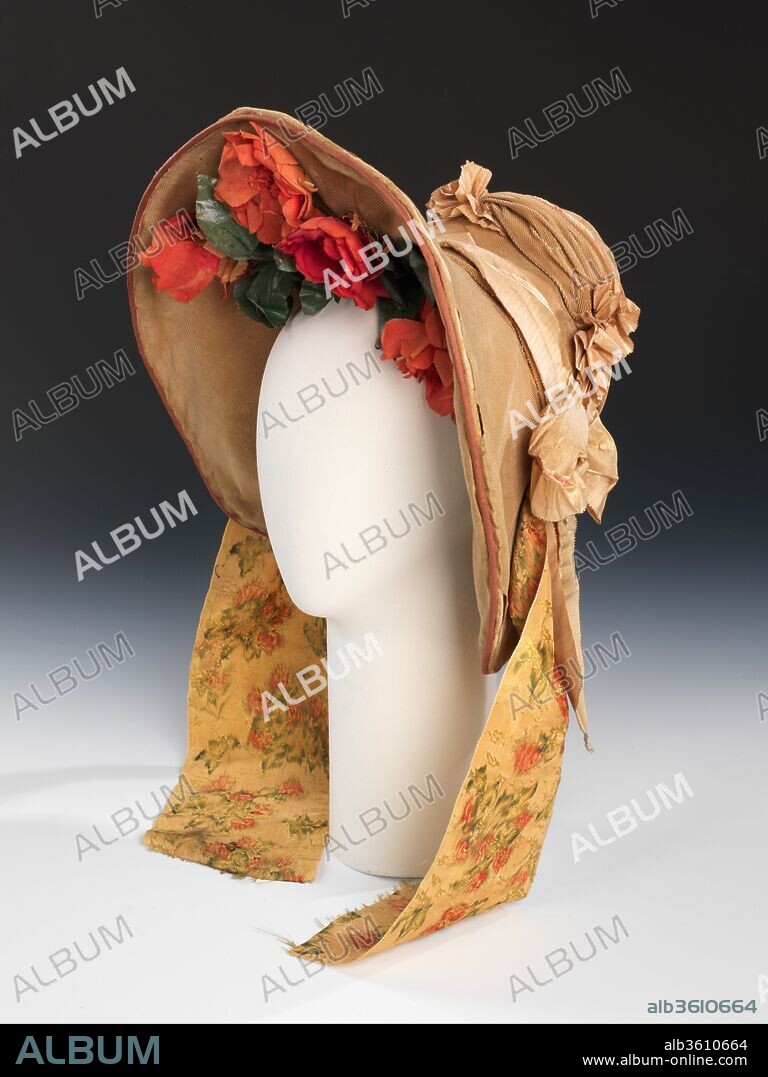alb3610664
Wedding bonnet

|
Add to another lightbox |
|
Add to another lightbox |



Buy this image.
Select the use:

Title:
Wedding bonnet
Caption:
Wedding bonnet. Culture: American. Date: 1837.
Worn by Elizabeth Hawes Russell at her wedding in November, 1837, this is the classic bonnet form of mid-romantic period headwear. Adorned with flowers and ribbons, the exuberant broad brim attractively framed the face and and echoed the drama of the voluminous wing-like sleeves of the period's ankle-length, full-skirted dresses. Sometimes referred to in contemporaneous writings as a Victoria bonnet, this particular shape was appropriate for wearing in public in the afternoon. As most surviving bonnets from the period are fashioned from silk or straw, the use of "everyday" ribbed weave cotton as the exterior covering comes as a surprise, especially for wedding wear. As such, it is a valuable object not only for its intrinsic visual merits but also as a document that extends our understanding of acceptable sartorial and social practices of the period.
1837 was a pivotal year in fashion, when the large sleeves collapsed and the shoulder greatly decreased in size. Bonnets also gradually changed shape after that date, their exuberance giving way to more demure bonnets with narrow close-fitting brims that hid the face.
Technique/material:
Cotton, silk
Museum:
Metropolitan Museum of Art, New York, USA
Credit:
Album / Metropolitan Museum of Art, NY
Releases:
Model: No - Property: No
Rights questions?
Rights questions?
Image size:
3150 x 4200 px | 37.9 MB
Print size:
26.7 x 35.6 cm | 10.5 x 14.0 in (300 dpi)
 Pinterest
Pinterest Twitter
Twitter Facebook
Facebook Copy link
Copy link Email
Email
